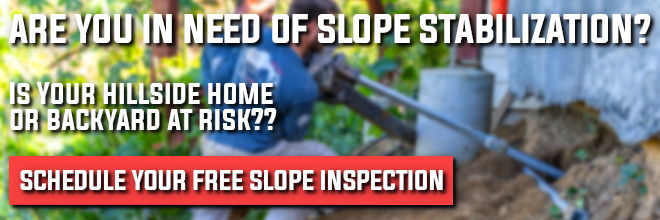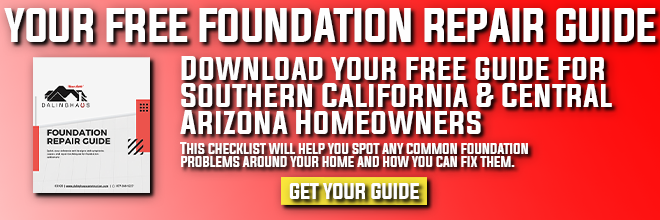If you’re a foundation repair enthusiast or Push Pier aficionado, you might have noticed we often mention in our videos that we install to bedrock, but what does that mean exactly?
Soil is comprised of different layers called horizons. Each horizon/layer has its own, unique set of characteristics. Bedrock is at the bottom of 4 horizons.
What is Bedrock?Bedrock is a deposit of solid rock that is typically buried beneath soil and other broken or unconsolidated material (regolith). Bedrock is made up of igneous, sedimentary, or metamorphic rock, and it often serves as the parent material (the source of rock and mineral fragments) for regolith and soil. Bedrock is also a source of nitrogen in the earth’s nitrogen cycle. A Bedrock deposit that occurs at the earth’s surface is called an outcrop. |
A soil profile is a vertical cross-section of soil. When exposed, various soil horizons become apparent. Each horizon of soil may be different from the other horizons in chemical makeup.
The differences are developed from the interaction of such soil-forming factors as parent material, slope, native vegetation, weathering, and climate.
The Horizons –
0 Horizon (Humus) – This is comprised of living and decomposed materials such as leaves, plants, and insects. This layer is usually thin and dark.
A Horizon (Topsoil) – This layer is comprised of minerals and decomposed organic matter. Consequently, this layer is full of plant roots due to its nutrient-rich nature.
B Horizon (Subsoil) – This layer is typically comprised of clay and mineral deposits and holds significantly fewer organic materials than the layers above it, resulting in a lighter color.
C Horizon (Regolith) – This layer is comprised of slightly unbroken rock and holds a small amount of organic material. Plant roots do not go down this deep due to the inherent lack of nutrients.
D Horizon (Bedrock) – This layer is comprised of consolidated rock (tight, unbroken, large formations of rock). There is very little organic material and roots do not dig down this deep.
Note – As you can see, the soil layers gain stability as you go down. Bedrock can be anywhere between 7 and 150 feet deep.
Bedrock is perfect for Push Pier and Helical Pier installation to impede foundation settlement.







